Michigan Ravenger 1950 Handleiding
Michigan
Niet gecategoriseerd
Ravenger 1950
Bekijk gratis de handleiding van Michigan Ravenger 1950 (29 pagina’s), behorend tot de categorie Niet gecategoriseerd. Deze gids werd als nuttig beoordeeld door 25 mensen en kreeg gemiddeld 4.8 sterren uit 13 reviews. Heb je een vraag over Michigan Ravenger 1950 of wil je andere gebruikers van dit product iets vragen? Stel een vraag
Pagina 1/29

User Manual
[Revision 7 ].0 May 2022
READ THIS MANUAL CAREFULLY BEFORE USE – FAILURE TO DO SO MAY RESULT IN INJURY, PROPERTY DAMAGE AND
MAY VOID WARRANTY. • KEEP THIS MANUAL FOR FUTURE REFERENCE. • Products covered by this manual may vary in
appearance, assembly, inclusions, specifications, description, and packaging.
The product is NOT supplied with engine oil, although traces of oil from the manufacturing process may be present. It is essential to
add adequate engine oil of the correct type to the engine before use. Failure to add engine oil will void the product warranty.

Ravenger 1950 Wood er and Chipp Shredder
E&OE 2 © 2022 Michigan USA
Safety
Safety messages are designed to alert you to possible dangers or hazards that could cause death,
injury or equipment or property damage if not understood or followed. Safety messages have the
following symbols:
You WILL be KILLED or
SERIOUSLY INJURED if you do
not follow instructions.
You CAN be KILLED or
SERIOUSLY INJURED if you do
not follow instructions.
You CAN be INJURED if you do
not follow instructions or
equipment damage may occur.
It is important that you read and
understand the instruction manual before
use and keep the manual in a safe place
for future reference. Safety information
presented here is generic in nature – some
advice may not be applicable to every
piece of equipment. The term “equipment"
refers to your product, be it electrical
mains, battery or petrol engine powered.
Read all safety warnings and all
instructions. When using the equipment,
basic safety precautions detailed here
must always be followed to reduce the risk
of fire, electric shock, personal injury and
material damage.
IMPORTANT – Handle the equipment
safely and carefully.
BEFORE USE - If you are not familiar with
the safe operation/handling of the
equipment, or are in any way unsure of any
aspect of suitability or correct use it for
your application, you should complete
training conducted by a person or
organization qualified in safe use and
operation of this , including equipment
fuel/electrical handling and safety.
WARNINGS
• Read all safety warnings and all
instructions. When using the equipment,
basic safety precautions detailed here
must always be followed to reduce the
risk of fire, electric shock, personal injury
and material damage.
• Do not operate the equipment in
flammable or explosive environments,
such as in the presence of flammable
liquids, gases or dust. The equipment
may create sparks or heat that may
ignite vapors, dust etc
• Keep clear of moving parts.
• Equipment may be a potential source of
electric shock if misused. or injury
• Do not operate the equipment if it is
damaged, malfunctioning or is in an
excessively worn state.
• Do not allow others to use the
equipment unless they have read this
manual and are adequately trained .
General Work Area Safety
W ork areas should be clean and well it.
Do not operate the equipment if
bystanders, animals etc are within
operating range of the equipment or the
general work area.
General Personal Safety
Keep packaging away from children - risk
of suffocation! Operators must use the
equipment correctly. When using the
equipment, consider conditions and pay
due care to persons and property.
Prevent unintentional starting of the
equipment - ensure equipment and power
source switches are in the OFF position
before connecting or moving the
equipment. Do not carry equipment with
hands/fingers touching any controls.
Remove any tools or other items that are
not a part of the equipment from it before
starting or switching on.
Stay alert and use common sense when
operating equipment. Do not overreach.
Keep proper footing and balance at all
times. Do not use equipment when tired or
under the influence of drugs, alcohol or
medication. This equipment is not intended
for use by persons with reduced physical,
sensory or mental capabilities.
You must wear appropriate protective
equipment when operating, servicing, or
when in the operating area of the
equipment to help protect from serious
injury, including eye injury, inhalation of
toxic fumes, burns, and hearing loss.
Always wear eye protection. Protective
equipment such as respirators, non-skid
safety shoes, hard hat, hearing protection
etc should be used for appropriate
conditions. Other people nearby should
also wear appropriate personal protective
equipment. Do not wear loose clothing or
jewellery, which can be caught in moving
parts. Keep hair and clothing away from
the equipment.
If devices are provided for the connection
of dust extraction and collection facilities,
ensure these are connected and properly
used. Use of dust collection can reduce
dust-related hazards.
General Equipment Use and Care
Do not force the equipment. Use the
correct equipment for your application. The
correct equipment will perform better and
be safer within its design parameters.
Do not use the equipment if the ON/OFF
switch malfunctions – any equipment that
cannot be controlled with the ON/OFF
switch is dangerous and must be repaired.
Use the equipment and accessories etc. in
accordance with these instructions, taking
into account working conditions and the
work to be performed. Using the equipment
for operations different from those intended
could result in hazardous situations.
Before use, inspect the equipment for
misalignment or binding of moving parts,
loose components, damage or any other
condition that may affect its operation. If
damaged, have the equipment repaired by
an authorized service or technician centre
before use.
Always keep the equipment and
accessories (cutting tools, nozzles, bits
etc) properly maintained. Keep the
equipment, controls and handles dry and
free from dirt, oil and grease.
Store the equipment out of reach of
children or untrained persons. To avoid
burns or fire hazards, let the equipment
cool completely before transporting or
storing. Never place the equipment in
places where there are flammable
materials, combustible gases or
combustible liquids etc.
The equipment is not weatherproof, and
should not be stored in direct sunlight, at
high ambient temperatures or locations
that are damp or very humid.
Chipper Use and Care
• The equipment should be operated by
responsible adults only, 18 years of age
and over.
• The equipment must be used on firm,
flat and level surfaces only.
• Maintain a safe working distance of at
least 15m (36') between the output chute
and any persons, animals or structures.
• Before each use, check the cutting blade
clearance and ensure that blade
fasteners are tight.
• Do not use the equipment for purposes it
is not designed for.
• Do not attempt to chip or shred
branches bigger then 120mm diameter.
• Branches greater than 30mm diameter
that are growing out of a branch being
chipped should be cut off and chipped
separately.
• For roots, always remove any attached
dirt, stones etc before chipping.
• Do not attempt to chip or shred any
material other than suitable wood types.
• Do not attempt to remove materials from
the machine or attempt to un- jam it while
the machine is running.
• Do not use the machine in confined
areas where ventilation or space around
the machine is limited.
• After stopping the engine, always allow
all moving components (blades etc) to

Ravenger 1950 Wood er and Chipp Shredder
E&OE 3 © 2022 Michigan USA
stop moving before moving, lifting etc.
General Fuel Safety
Petrol/fuel/gasoline is extremely
flammable – keep clear of
naked flames or other ignition
sources.
• Do not spill fuel. If you spill fuel, wipe it
from equipment immediately – if fuel
gets on your clothing, change them
immediately
• Do not smoke near fuel.
• Always shut off the engine before
refuelling.
• Do not refuel a hot engine.
• Open the fuel cap carefully to allow any
pressure build up in the tank to release -
slowly.
• Always refuel in well ventilated areas.
• Always check for fuel leakage. If fuel
leakage is found, do not start or run the
engine until all leaks are fixed.
General Electrical Safety
• Inspect electrical equipment, extension
cords, power bars, and electrical fittings
for damage or wear before each use.
Repair or replace damaged equipment
immediately.
• s Ensure all power source conform to
equipment voltage requirements and are
disconnected before connecting or
disconnecting equipment .
• When wiring electrically powered
equipment, follow all electrical and
safety codes.
• Wherever possible, use a residual
current device (RCD).
• Electrically grounded equipment must
have an approved cord and be and plug
connected to a grounded outlet .
• Do not bypass the on/off switch and
operate equipment by connecting and
disconnecting the power cord.
• Do not use equipment that has exposed
wiring, damaged switches, covers or
guards.
• Do not use electrical equipment in wet
conditions or damp locations.
• Do not use electrical cords to lift, move
or carry equipment.
• Do not tie electrical cords in tight knots
and ensure electrical cords do not
present trip hazards.
General Service Information
• Have the equipment serviced or repaired
at authorized service centers by
qualified personnel only.
• Replacement parts must be original
equipment manufacturer (OEM) to help
ensure that equipment safety is
maintained.
• Do not attempt any maintenance or
repair work not described in this
instruction manual.
• After use, the equipment and
components may still be hot allow the –
equipment to cool and disconnect spark
plugs and/or electrical power sources
and/or batteries from it before making
adjustments, changing accessories or
performing repair or maintenance.
• Do not make adjustments while the
equipment is running.
• Perform all service related activities
under suitable conditions, such as a
workshop etc.
• Replace worn, damaged or missing
warning/safety labels immediately.
• Do not clean equipment with solvents,
flammable liquids or harsh abrasives.
DANGER
Running petrol engines in confined areas CAN
KILL IN MINUTES. Engine exhaust fumes
contain carbon-monoxide – a deadly gas that you
cannot smell or see.
NEVER run a petrol engine in confined areas
EVEN IF windows and doors are open. ONLY run
petrol engines OUTDOORS and away from
doors, windows and vents.
Do not operate the equipment in hazardous locations,
such as where there may be a risk of fire or explosions
from flammable liquids, gases or dust.
Do not operate the equipment in confined areas where
exhaust gases, smoke or fumes could reach dangerous
concentrations.
Do not refuel petrol engines while they are running.
Never smoke while refuelling petrol engines.
For generators, the electrical output is potentially lethal
and must only be connected to a fixed electrical
installation by an appropriately licensed person.
Be aware that the equipment may include hazardous
components, such as blades, hot surfaces and moving
parts.
Product specificaties
| Merk: | Michigan |
| Categorie: | Niet gecategoriseerd |
| Model: | Ravenger 1950 |
Heb je hulp nodig?
Als je hulp nodig hebt met Michigan Ravenger 1950 stel dan hieronder een vraag en andere gebruikers zullen je antwoorden
Handleiding Niet gecategoriseerd Michigan

18 Augustus 2024

7 December 2023

8 Juli 2023

7 Juli 2023

5 Juli 2023

5 Juli 2023
Handleiding Niet gecategoriseerd
- XP
- Vaddio
- Belulu
- Kruidvat
- SkyRC
- Universal Remote Control
- Neumann
- Echo
- JORGENSEN
- APDTY
- Melnor
- Wimberley
- Arcelik
- Sharkoon
- Veripart
Nieuwste handleidingen voor Niet gecategoriseerd

19 Augustus 2025
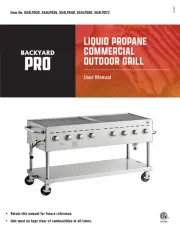
19 Augustus 2025
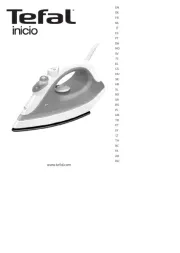
19 Augustus 2025
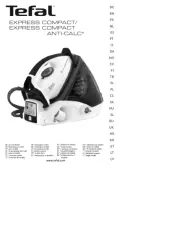
19 Augustus 2025
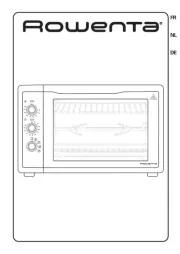
19 Augustus 2025

19 Augustus 2025
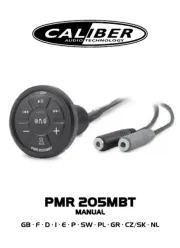
19 Augustus 2025
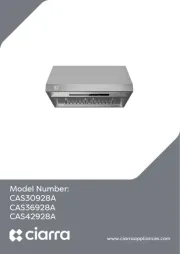
19 Augustus 2025
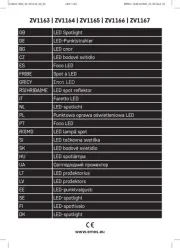
19 Augustus 2025
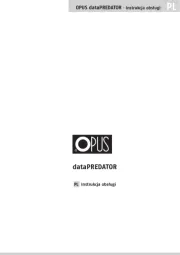
19 Augustus 2025